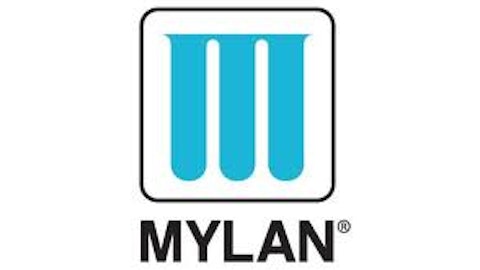
The natural-gas market has been cooling down in recent weeks as the price of natural gas has been declining. Will natural gas decline further? Will it fall below the $3 mark? How will the recent developments in the natural-gas market affect leading natural-gas companies such as Northeast Utilities System (NYSE:NU)?
Let’s examine the recent developments in the natural-gas and liquefied-natural- gas (LNG) markets and see what is up ahead.
Natural gas price is falling
The weakness of natural gas in recent weeks is also reflected in the sharp fall of the United States Natural Gas Fund, LP (NYSEMKT:UNG) . During the month, the fund declined by 10.6%. This ETF follows the price of short-term natural-gas futures that are traded on NYMEX. As of June 27, the fund’s net assets reached $838 million. Keep in mind that the ETF isn’t an exact match with the price of natural gas and it has a small gap from the change in natural-gas prices that currently stands at 0.3%. To analyze what is next for natural-gas prices, let’s examine the recent developments in natural-gas demand, supply and storage.
Demand and supply
Based on the U.S Energy Information Administration, natural-gas consumption in the residential/commercial sector declined in recent weeks as the weather continued to heat up. Companies such as Northeast Utilities System (NYSE:NU) are likely to see a sharp drop in natural-gas distribution in the second quarter of 2013 compared to 2012: In the second quarter of 2012, revenue from natural-gas distribution reached $2.1 billion, which represented 11% of the company’s total revenue. But this segment accounted for 19% of Northeast Utilities System (NYSE:NU)’ total earnings. This means, natural-gas distribution is the company’s most profitable segment and is likely to fall in the coming quarters. On the other hand, the higher price of natural gas in 2013 compared to 2012 is likely to curb the drop in natural-gas revenue.
Conversely, consumption in the power sector continues to rise as utilities keep using their natural-gas stockpiles to generate electricity. On a national level, the rise in power-sector consumption is keeping total demand rising. The demand for natural gas in this sector is likely to keep rising but will be lower than last year’s. This summer is expected to be cooler than last year, which will reflect in a slower rise in natural-gas consumption in the coming months.
From the supply side, natural-gas production continues to slowly increase. Despite the rise in production, the number of natural-gas rigs continues to fall and reached 349 by the end of last week. The current number of rigs is 35% lower than last year’s rig count.
Based on the above, the ongoing rise in natural-gas consumption in the power sector is likely to curb the fall in natural-gas prices in the coming weeks. Moreover, as heating degrees continue to climb, demand for electricity will keep rising, which will prevent natural-gas prices from tumbling.
Storage
The storage buildup in the past several weeks was much faster than the normal pace; the gap between the current storage levels to previous years’ levels has contracted in recent weeks. During June, storage buildup was 392 Bcf. In comparison, during the same time frame in 2012, the buildup was 248 Bcf. If the buildup pace will continue to pick up, this could suggest the natural-gas market is loosening up.
The table below shows the gap contraction in recent weeks.

The contraction suggests the natural-gas market is loosening up in recent weeks.
Liquefied natural gas in Australia
The LNG market in the U.S is slowly progressing, but outside the U.S the LNG market continues to heat up — especially in Australia. According to the EIA’s recent report, Australia will be able to augment its LNG export capability by more than 200% by the end of 2020. Australia’s current LNG export capacity is 3.2 Bcf/d. By 2020, this capacity will reach 11.2 Bcf/d. This increase in capacity will eventually lead to a rise in demand for LNG in Japan, China, India, Korea, and Mexico.
One of the main driving forces behind this increase in Australia’s LNG export capability is Chevron Corporation (NYSE:CVX), which develops the largest LNG project in Australia named the Gorgon LNG (opens pdf) terminal. This terminal is projected to start operating by March 2015. Currently, nearly 60% of the terminal is complete. The project is expected to generate 2.0 Bcf/d of natural gas. This means that by 2015, Chevron Corporation (NYSE:CVX) will start seeing a rise in revenue from LNG. Such projects are likely to make LNG more common but at the same time lower the price of natural gas.
Take away
The natural-gas market is likely to keep cooling down and we may see a further drop in prices in the coming weeks. But natural-gas prices will remain well above the $3 mark in the coming weeks as the demand in the power sector starts to pick up.
The article Will Natural Gas Fall Below $3? originally appeared on Fool.com is written by Lior Cohen.
Lior Cohen has no position in any stocks mentioned. The Motley Fool recommends Chevron. Lior is a member of The Motley Fool Blog Network — entries represent the personal opinion of the blogger and are not formally edited.
Copyright © 1995 – 2013 The Motley Fool, LLC. All rights reserved. The Motley Fool has a disclosure policy.



